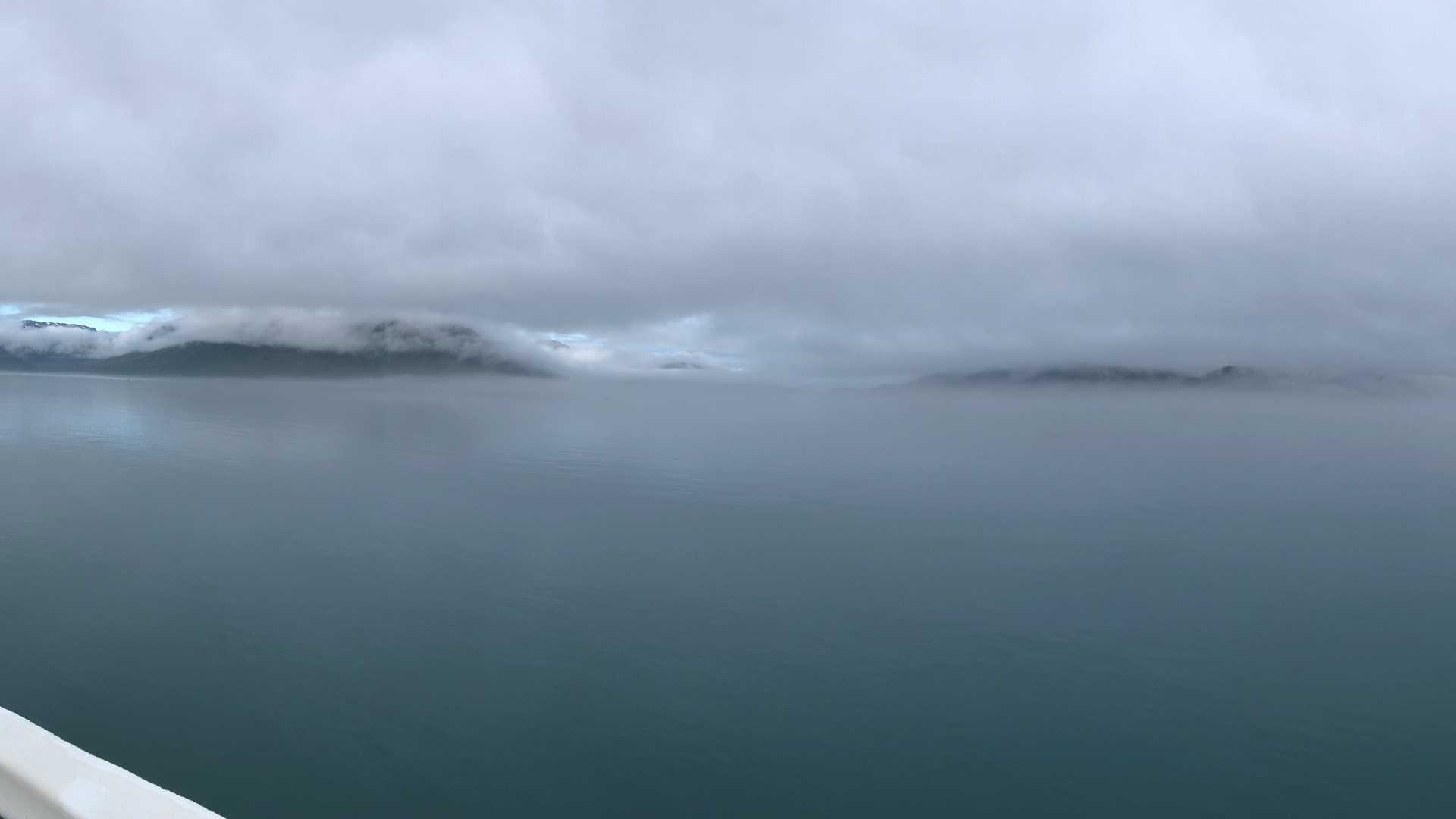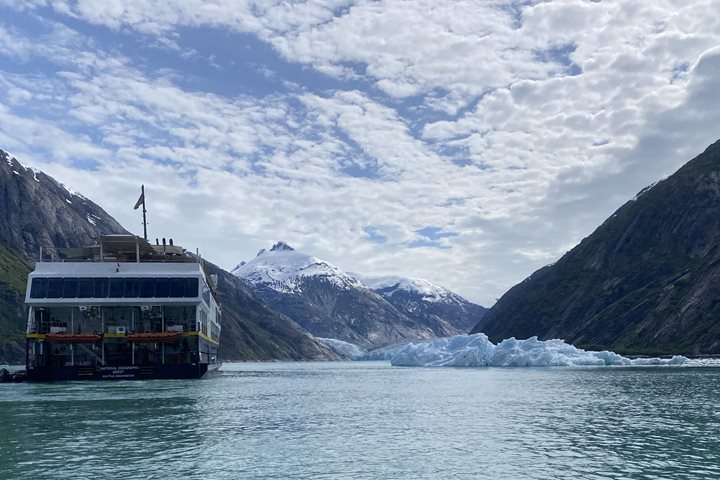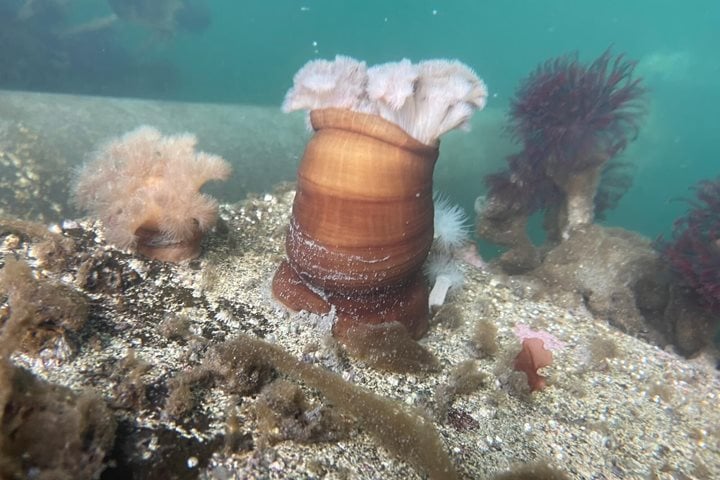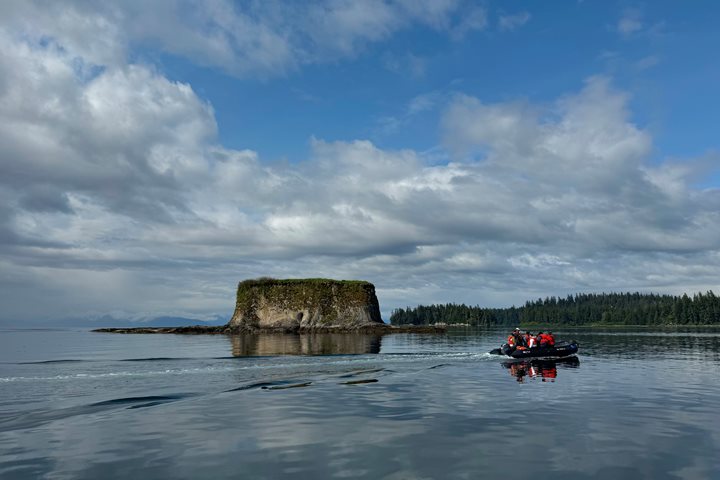The foghorn sounds…Steller’s sea lions bark a response from the channel buoy….early hour happenings aboard National Geographic Venture. Chocolate chip muffins are quite popular fare for the early risers…a first breakfast, save room for the main course.
George Island is our morning destination for hiking and kayaking. A beautiful mixture of natural / WWII history and marine observations. Flood tide in the afternoon sets the stage for Zodiac tours of the Inian Islands and great views of feeding sea otters, Steller’s sea lions, and American bald eagles. The excited chatter of guests at cocktail hour is a telltale sign of a day done well by all aboard National Geographic Venture.







